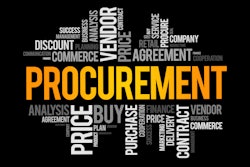
Inventory continues to be a board-level topic in the wake of the COVID crisis and ongoing supply chain issues, with a new survey revealing that senior executives don’t have an objective standard to measure their organizations against when it comes to inventory levels.
That’s according to nVentic, which surveyed 250 C-suite executives of large to very large European companies in the manufacturing sector.
To help companies improve their inventory year on year and take the pain out of inventory analytics, nVentic has launched nVstocks Inventory Evaluation to empower supply chain teams to identify, prioritize and act on opportunities to avoid shortages and overstocks.
Matthew Bardell, managing director at nVentic, says “This might be complacency: writing off 5% of inventory every year and losing sales is ‘good enough’. Or it might be despair: ‘it’s impossible to do any better’. Either way, if the 77% who are investing in their inventory capabilities really want to judge whether those investments pay off, they need to develop a strong and objective way of establishing what good looks like.”
Key Takeaways:
- The survey found that there is significant room for improvement. Only 28% report that inventory has not had a negative impact on their business performance over the last three years. 59% report lost sales due to inventory shortages, and 37% regularly scrap more than 5% of inventory each year. In fact, 14% regularly scrap more than 10%.
- The research revealed that the strategic importance of inventory is recognized at a majority of businesses. Ninety percent of executives report discussing it regularly at board level, 77% have made or are planning investments in their inventory management capabilities, and 74% say they are concerned about the environmental impact of scrapped inventory. On top of this, 69% consider inventory a strategic element of their business that can give them a competitive advantage.
- The tool provides organizations with an objective assessment of current inventory levels, highlighting item by item where they have too little or too much but in a way that allows users to filter and sort items using a range of criteria, such as shortage risk or reduction potential. The tool calculates optimal levels using established inventory science and presents them in a number of flexible and intuitive formats, along with a simple-to-follow guide.




![Pros To Know 2026 [color]](https://img.sdcexec.com/mindful/acbm/workspaces/default/uploads/2025/08/prostoknow-2026-color.mduFvhpgMk.png?auto=format%2Ccompress&bg=fff&fill-color=fff&fit=fill&h=100&q=70&w=100)







![Pros To Know 2026 [color]](https://img.sdcexec.com/mindful/acbm/workspaces/default/uploads/2025/08/prostoknow-2026-color.mduFvhpgMk.png?ar=16%3A9&auto=format%2Ccompress&bg=fff&fill-color=fff&fit=fill&h=135&q=70&w=240)





